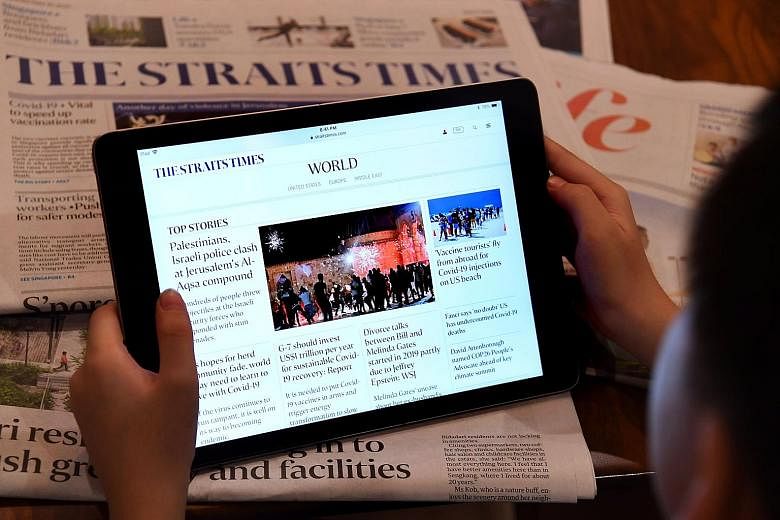Singapore Press Holdings (SPH) publications have been retaining and attracting readers on digital platforms but have not been able to monetise these gains.
The global trends behind this phenomenon are expected to persist and widen. These trends - which affect SPH, Mediacorp and the global media industry - will inevitably affect Singapore's vernacular papers, some of which have relatively small circulations.
And if they persist, there would be a profound detrimental impact on the multiracial fabric of Singapore society, Minister for Communications and Information S. Iswaran told Parliament yesterday.
This is why the Government must take a long-term view and adopt measures to secure the sustainability of the local media, added Mr Iswaran, who was making a ministerial statement on SPH's proposal to hive off its media business into a new media entity which will be a company limited by guarantee (CLG).
"Without a responsible and high-quality local media, the quality of our public debate and discourse will be compromised, and we will slowly but inexorably become less cohesive as a society," he added.
The Government thus supports SPH's restructuring proposal and is willing to provide funding to the CLG, Mr Iswaran said, noting that the company's current model of a news media business within a listed company is no longer viable.
A CLG is one model where the news media business is removed from the constraints of a listed company, allowing it to invest in its newsrooms, he added.
He said the Government is willing to help fund the proposed CLG in areas such as digital innovation and capability development, while ensuring fiscal discipline and accountability.
In his statement, Mr Iswaran noted that SPH's overall reach and readership have never been higher, with SPH papers' total circulation growing by 5 per cent from 2017 to last year.
Within this period, The Straits Times' print and digital circulation has grown by about 20 per cent.
As at last August, the daily average circulation of ST on print and digital platforms was 458,200, up from 386,100 a year ago. Digital circulation for ST, which was close to 300,000, exceeded that of print.
Significant investments have also been made to build digital capabilities and grow readership. They amount to about $50 million a year for the last five years, said Mr Iswaran.
But despite rising readership, SPH's media business has been steadily losing revenue, said the minister. Its media business has lost half its operating revenue in the past five years and posted its first-ever loss of $11.4 million last year.
SPH expects these trends to persist and widen, with print advertising revenue falling as media consumption progressively shifts online, noted Mr Iswaran.
Rising digital advertising will not compensate for the fall in print advertising revenue, and there is limited scope to grow digital subscriptions, given the small domestic market and global competition, he added.
These trends will also be compounded by the lingering economic impact of Covid-19.
Mr Iswaran also noted that SPH, as a listed company, has been under persistent pressure to account to shareholders for the poor financial performance of its media business.
The company has implemented several cost-cutting and retrenchment exercises in recent years, but SPH has assessed that any further cuts would impair its ability to maintain quality journalism, he said.
SPH also faces constraints in making significant and sustained investments in digital and newsroom capabilities, which may not yield near-term payoffs.
"Hence, under the current structure, there is a serious risk that SPH's media capabilities will be hollowed out," said Mr Iswaran.
Without sustained investment in capacity building and a pivot to the digital space, its quality and circulation will fall, which will worsen the financials and affect vernacular papers. "This is the sobering picture of what lies ahead if we fail to act now and take proactive steps."


